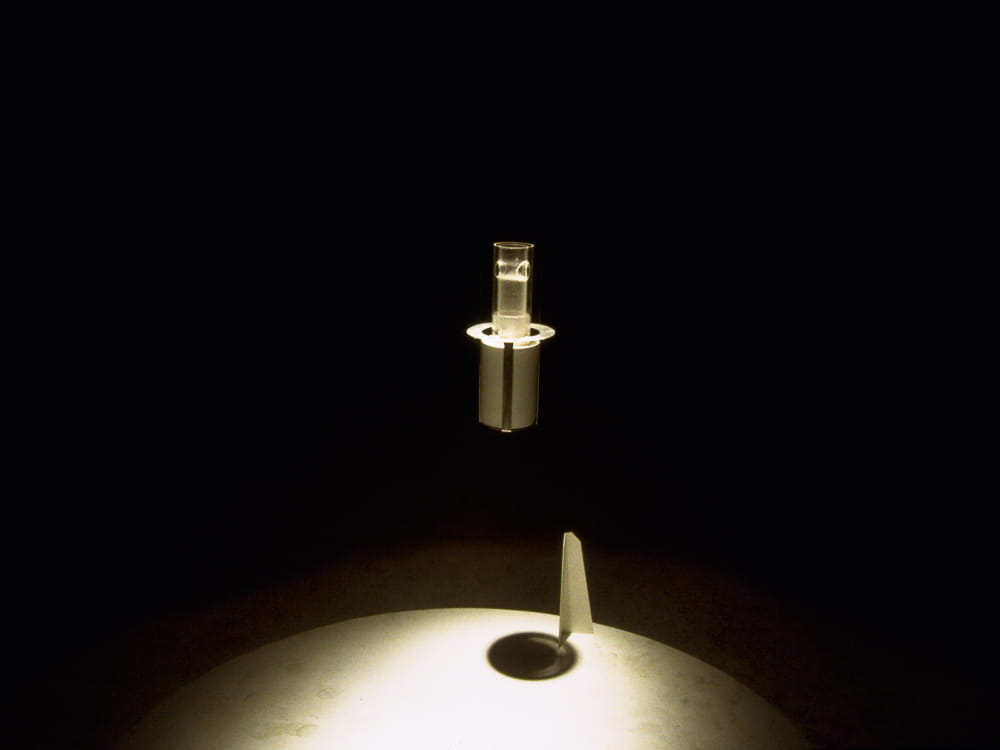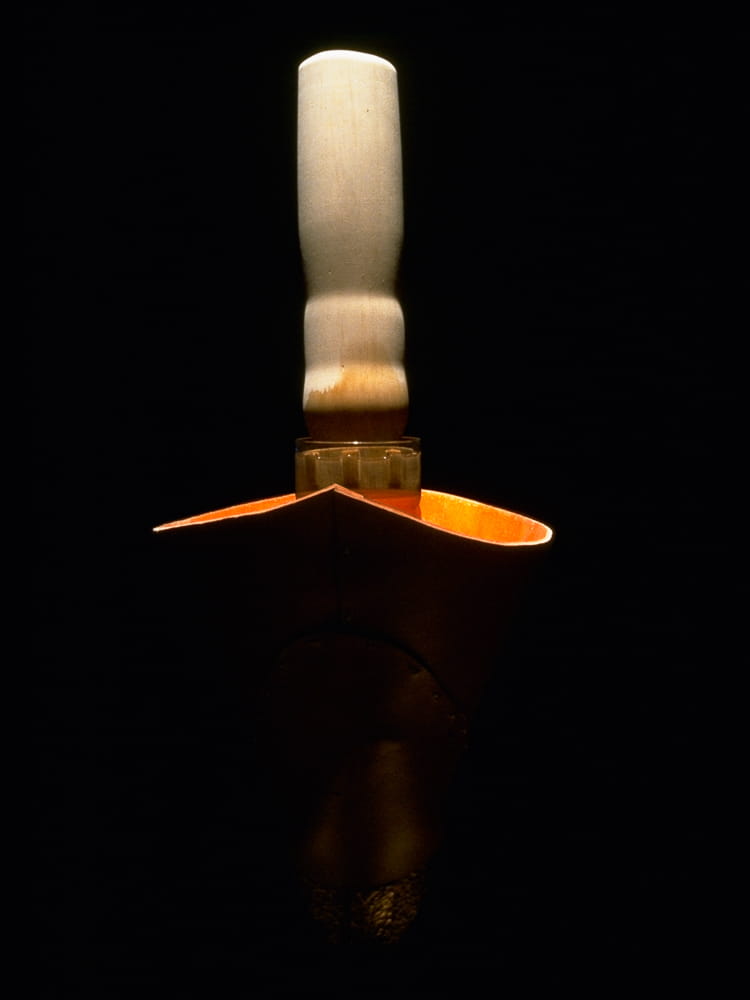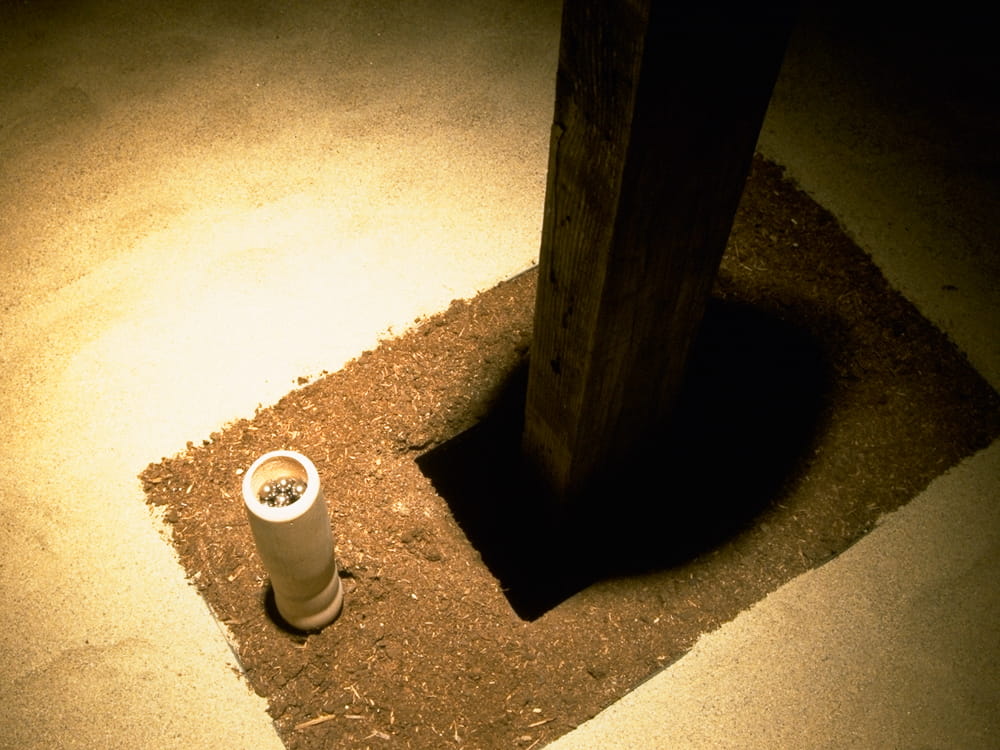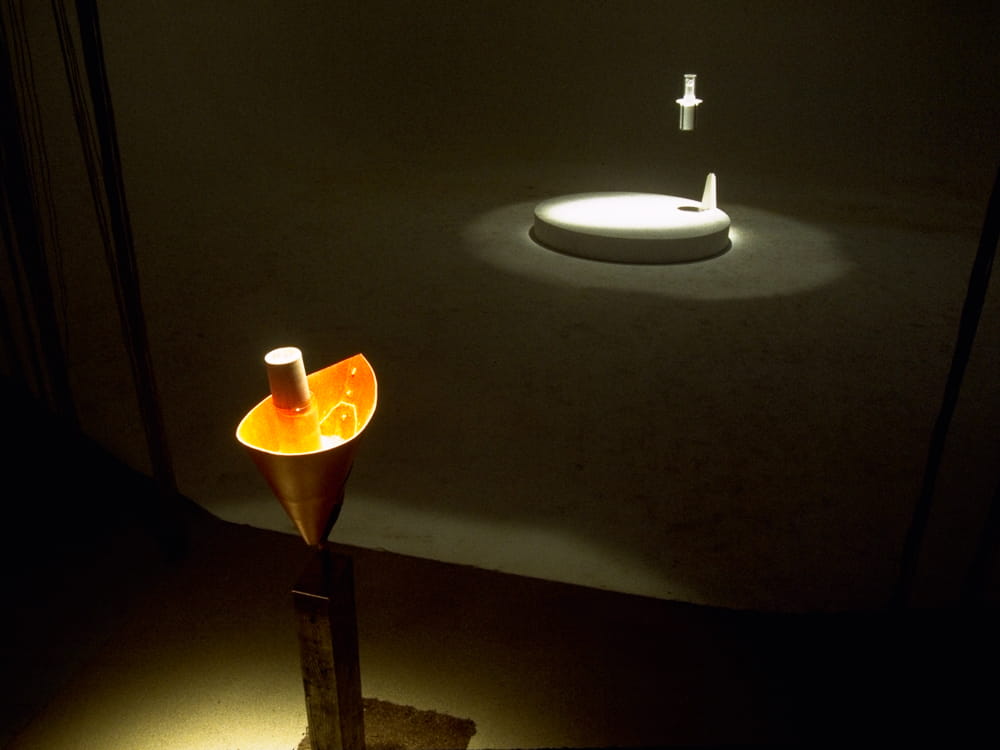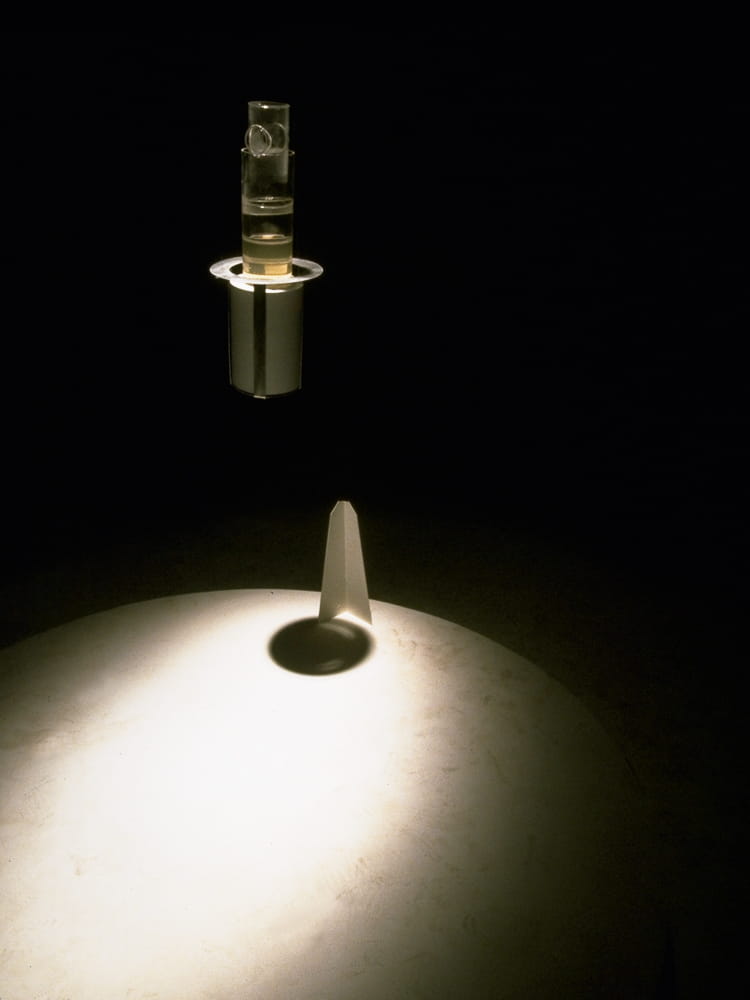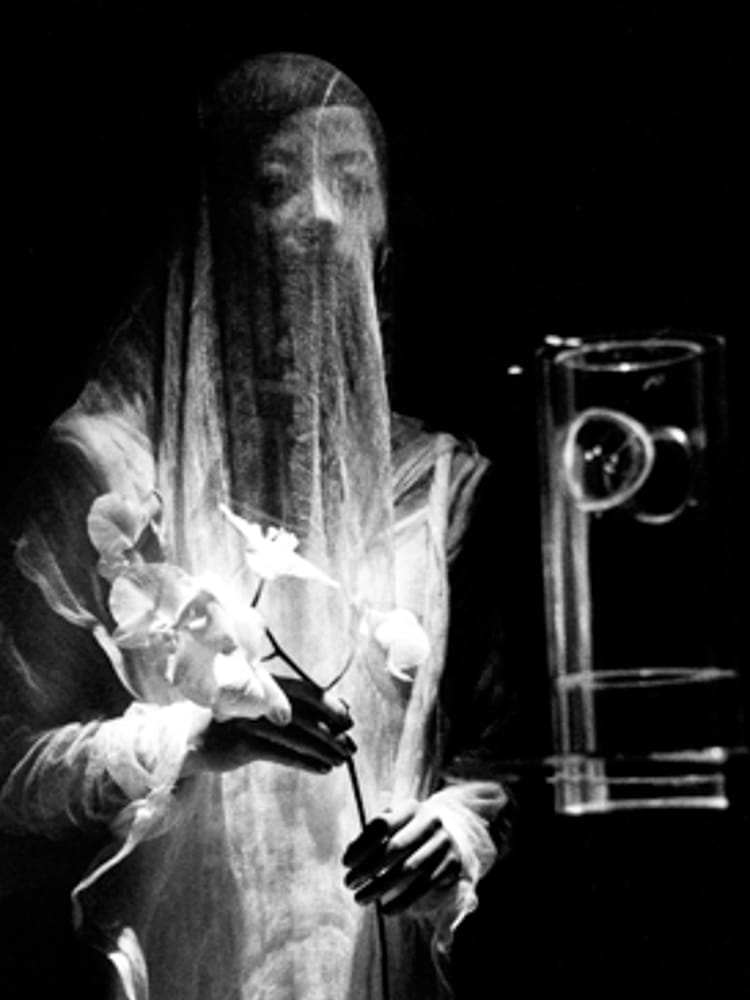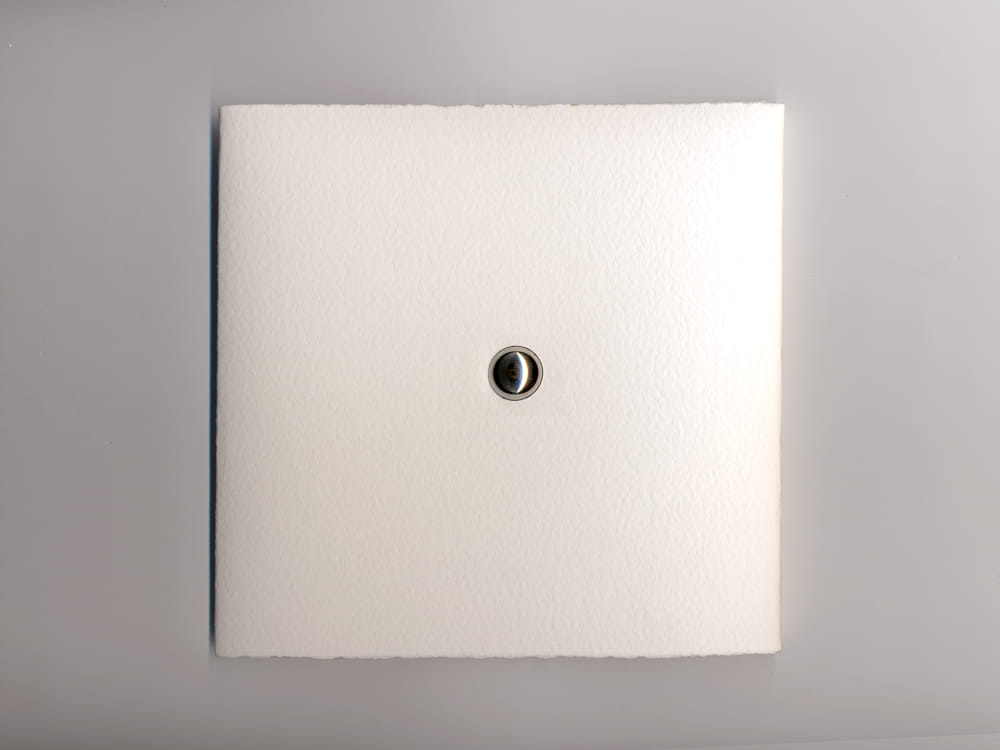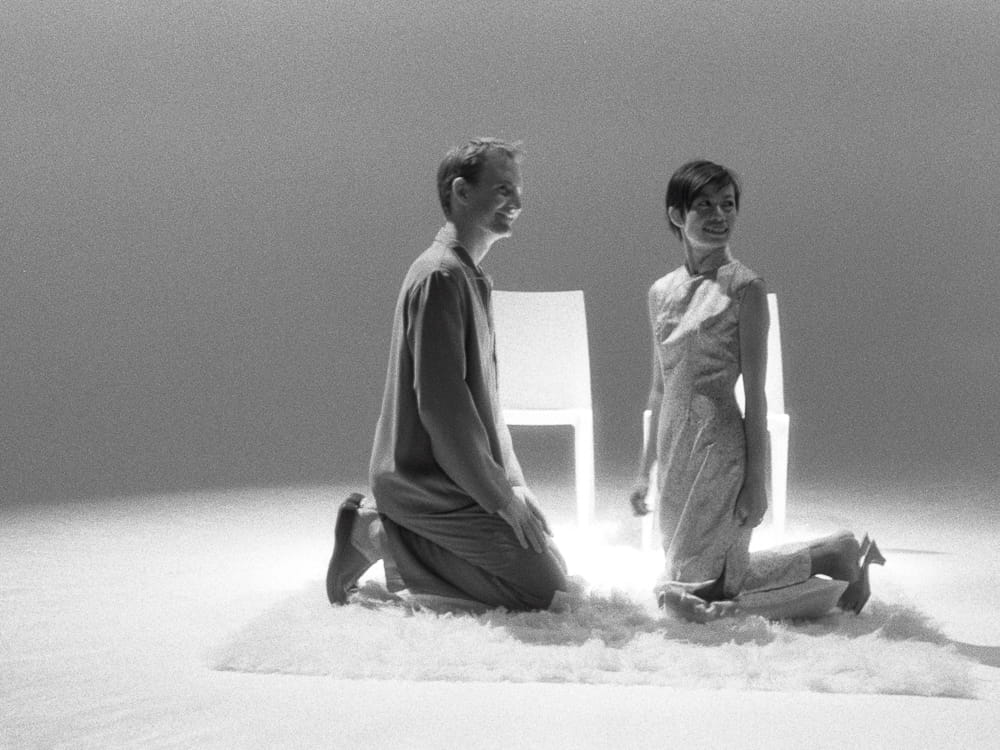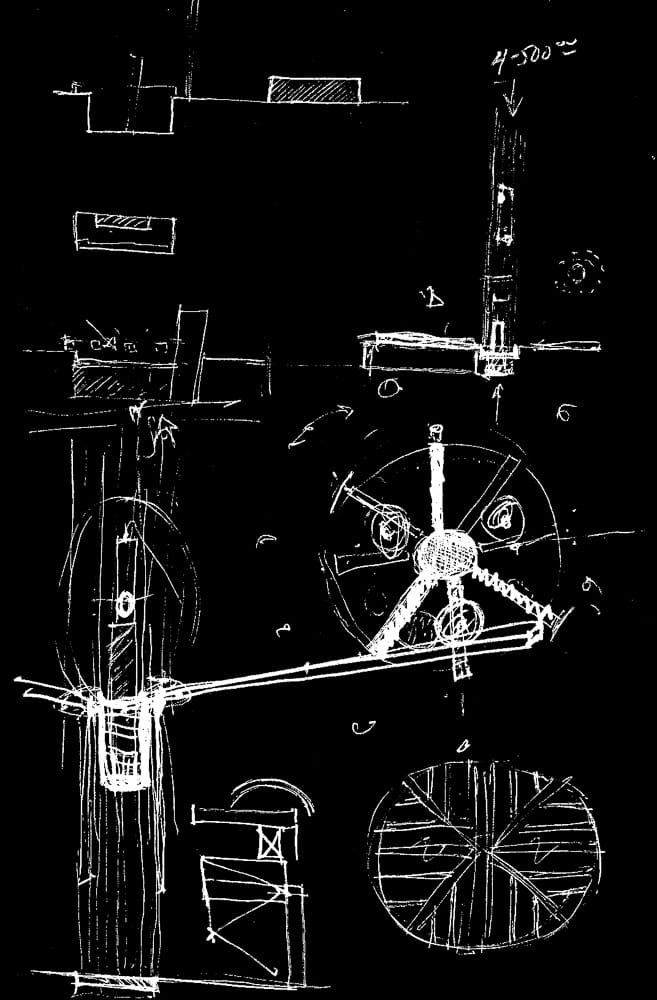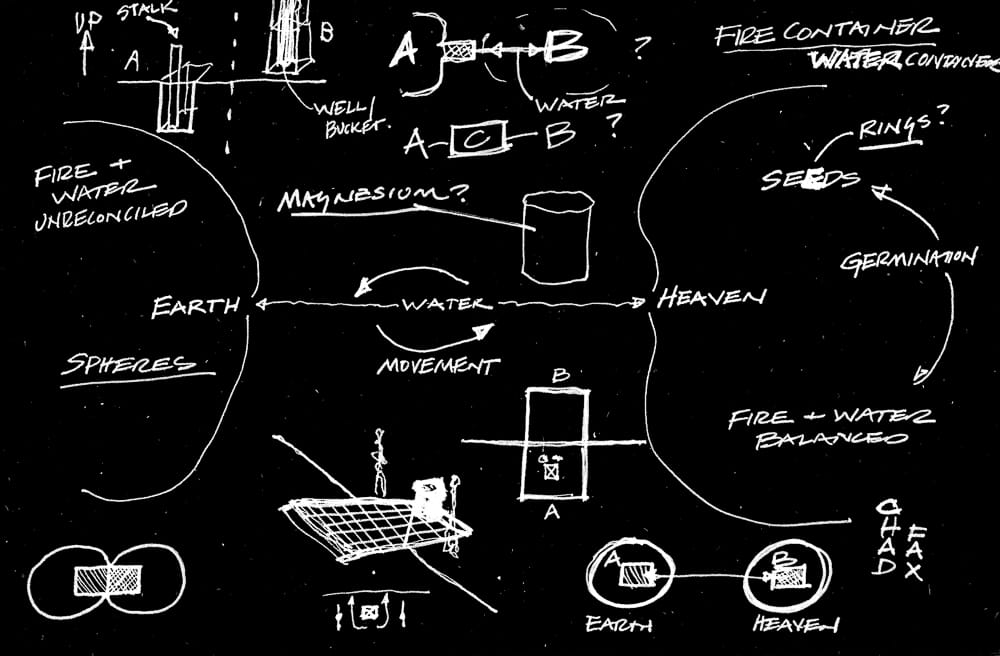The Union
2000
The Union is both a ceremonial design and an installation for a civil union. From the very beginning, we want to make sure the attendees are not simply spectators but play an active role in facilitating and solidifying the union.
Our first design task was the wedding invitations, which were structured as a provocation. Each invitation contained a 15mm chromed steel sphere and the instruction to bring it on the date of the ceremony; once the invitations reached the recipients, the “seeds” were planted without knowing what they would grow into.
Given the bride’s Chinese heritage, we decided to begin our ceremony design by consulting I-Ching to inspire a collection of symbolic cues. The I-Ching contains sixty-four hexagrams, each composed of six lines representing the yin and yang energies. The interplay of these lines illustrates the dynamic balance of opposing forces in the universe.
Through a series of 18 coin tosses, three hexagrams were obtained. These hexagrams conveyed meanings such as “a well as a form and water as an essential element bridging or lifting other elements from earth to sky”. Based on the clues, a palette of materials emerged: copper, wood, sand, leather, glass, and twine – each material was further formed, shaped, and assembled to reinforce the ceremony’s theme.
The core concept of the ceremony centered on creating an alchemical process initiated by the guests’ chrome spheres, symbolizing transformation and unity. The ceremony venue was Miau Haus Studio, an event and photoshoot studio that had its previous life as an auto-mechanic shop. Since the venue was only reserved for a day, the installations were fabricated offsite and installed on the ceremony day.
As the guest artist and carpenter, Chad Hatfield, arrived in Los Angeles three days before the ceremony, the ceremonial concept solidified from sketches to objects. A donated timber, acrylic and leather, copper, wood, and steel took form.
The stage emerged as the installation began – a threshold representing both earth and a bridge is constructed with plywood and covered with sand spanning over the auto-mechanic’s pit. On the “Sky” or heaven side, a stage light focuses on a small round platform, making the photo studio’s cycwalls dissolve into the ethereal. A timber emerged from the pit in the middle of the threshold, holding a leather vessel with a floating vase in the middle.
As the ceremony began, the chorus in Steven Reich’s sublime work repeated, “How small a thought it takes to fill a whole life!”. The bride and the groom greeted each guest as they deposited the chrome spheres into the floating vase, displacing water into the leather vessel, symbolizing the individual blessings collected and transformed into water. The guests gathered around the stage inside the “Sky” chamber. The bride and groom walked with their thesis advisor, Perry Kulper, who carried the leather vessel. Together, the three mounted the platform inside the Sky chamber. A light tube held a pair of rings* at its bottom, floating above the platform. The groom assisted Perry as he poured the water from the leather vessel into the light tube; whereas the spheres sank toward the earth, the rings were buoyantly raised toward the sky. The unreachable was now reachable. As a community of friends and family looked on, the bride and groom exchanged vows and rings. The alchemical and spiritual enactment of the union was now complete.
*The rings were designed to symbolize the particular qualities of the bride and groom as individuals and as a pair. Each is a unique and richly charged form, and their production utilizes sophisticated computational tools and traditional casting methods. Together the rings were designed to engage and intertwine to form an unexpected and unified whole. The rings were a project of Lookinglass Architecture & Design, and the Union marked the beginning of a partnership between Yeh Design Lab and Lookinglass Architecture & Design.
Credits:
Wedding Invitation – Yi-Hsiu Yeh and Nick Gillock
Wedding Rings – Nick Gillock and Emil Mertzel
Wedding Space – Nick Gillock, Chad Halfhill, and Yi-Hsiu Yeh with Emil Mertzel, Wendy Bone, Paul Dobrasin, Terry Hudak, & Jeffrey Eyster.
Lighting Design – Kathy Pryzgoda with Terry Hudak
Wedding Dress – Yi-Hsiu Yeh and Pilar Mendez
Photography – Chad Halfhill and Yi-Hsiu Yeh
Advisor – Perry Kulper
Special thanks to Wendy Bone, Leslie Shih, Joy Lin, Yu-Yi Chan, the Yeh family, Randall Wilson, and the SCI-Arc Wood & Metal Shop, Miauhaus Studios/Gottfried Tollman, Mark Gee, and Bill Mohline.



